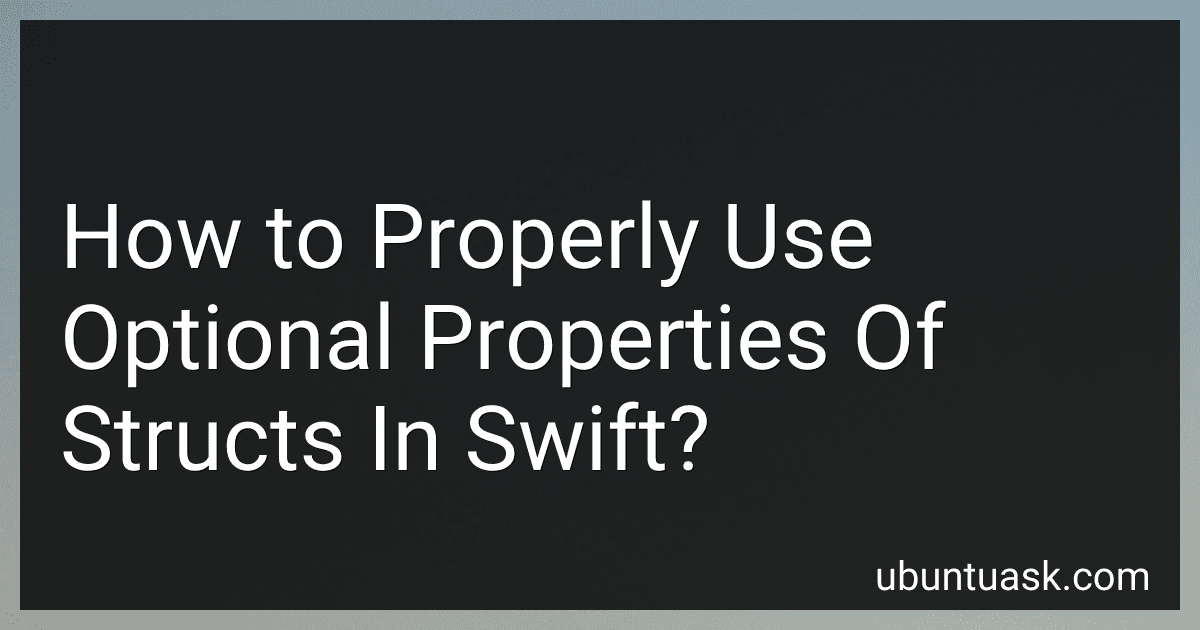Best Swift Structs Guide to Buy in December 2025
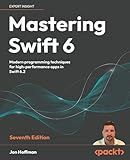
Mastering Swift 6: Modern programming techniques for high-performance apps in Swift 6.2


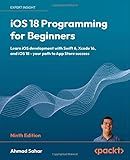
iOS 18 Programming for Beginners: Learn iOS development with Swift 6, Xcode 16, and iOS 18 - your path to App Store success


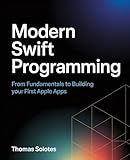
Modern Swift Programming: From Fundamentals to Building Your First Apple Apps


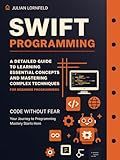
Swift Programming: A Detailed Guide to Learning Essential Concepts and Mastering Complex Techniques


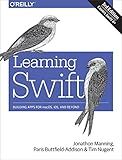
Learning Swift: Building Apps for macOS, iOS, and Beyond


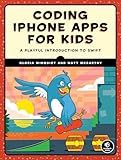
Coding iPhone Apps for Kids: A Playful Introduction to Swift


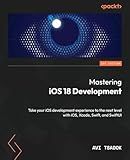
Mastering iOS 18 Development: Take your iOS development experience to the next level with iOS, Xcode, Swift, and SwiftUI


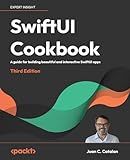
SwiftUI Cookbook: A guide for building beautiful and interactive SwiftUI apps


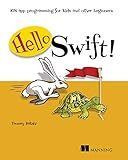
Hello Swift!: iOS app programming for kids and other beginners


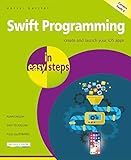
Swift Programming in easy steps: Develop iOS apps - covers iOS 12 and Swift 5


In Swift, optional properties of structs allow you to define properties that may or may not have a value. To properly use optional properties, you need to define them using the "?" symbol after the property type.
When working with optional properties, you can check if a property has a value using optional chaining or conditional binding. Optional chaining allows you to safely access the value of an optional property without causing a runtime error if the property is nil. Conditional binding, on the other hand, allows you to safely unwrap the optional value and use it within a conditional statement.
It is important to always check if an optional property has a value before accessing it to avoid unexpected runtime errors. Additionally, you can provide a default value for an optional property using the nil coalescing operator "??", which allows you to specify a default value to use if the optional property is nil.
By properly using optional properties in Swift, you can write more robust and safe code that handles optional values gracefully.
How to assign a value to an optional property in a struct in Swift?
To assign a value to an optional property in a struct in Swift, you can simply use the optional chaining syntax to check if the property has a value and then assign a value to it. Here's an example:
struct User { var name: String var age: Int? }
var user = User(name: "John", age: nil)
if user.age == nil { user.age = 30 }
print(user.age) // Output: Optional(30)
In this example, we have a struct User with an optional property age. We create an instance of the User struct with the age property set to nil. We then check if the age property is nil using the optional chaining syntax (if user.age == nil) and if it is, we assign a value of 30 to it.
You can also use optional binding to safely unwrap and assign a value to an optional property in a struct. Here's an example using optional binding:
if let age = user.age { print("User's age is \(age)") } else { user.age = 30 }
print(user.age) // Output: Optional(30)
In this example, we use optional binding (if let age = user.age) to safely unwrap the optional age property. If the property has a value, we print it. If it is nil, we assign a value of 30 to it.
How to check if an optional property is nil in a struct in Swift?
In Swift, you can check if an optional property is nil in a struct by using optional binding or by comparing it to nil. Here is an example:
struct Person { var name: String? var age: Int? }
let person = Person(name: "John", age: nil)
// Using optional binding if let name = person.name { print("Name is not nil: \(name)") } else { print("Name is nil") }
// Using comparison to nil if person.age != nil { print("Age is not nil: \(person.age!)") } else { print("Age is nil") }
In this example, we create a Person struct with optional properties name and age. We then check if the name property is nil using optional binding, and if the age property is nil by comparing it to nil.
How to use optional chaining with optional properties in a struct in Swift?
To use optional chaining with optional properties in a struct in Swift, you would first need to define a struct with optional properties. Here's an example:
struct Person { var name: String? var age: Int? }
let person: Person? = Person(name: "Alice", age: 30)
// Using optional chaining to access an optional property if let personName = person?.name { print("Person's name: \(personName)") } else { print("Person's name is nil") }
// Using optional chaining to access an optional property with multiple levels if let personAge = person?.age { print("Person's age: \(personAge)") } else { print("Person's age is nil") }
In the above example, we have defined a struct Person with optional properties name and age. We then create an optional instance of Person and use optional chaining to access the optional properties name and age. If the optional property is nil, the code inside the else block will be executed.
What is optional chaining in Swift and how does it relate to optional properties in a struct?
Optional chaining in Swift is a way to access properties, methods, and subscripts on an optional value that might currently be nil. This allows you to traverse the properties of an optional value without having to explicitly unwrap it with optional binding or force unwrapping, thus avoiding runtime crashes.
When using optional chaining on a struct with optional properties, the optional chaining operator (?.) is used to access the optional properties of the struct without needing to check if the struct instance is nil before accessing its properties. If any intermediate property in the chain is nil, the entire chain will evaluate to nil without causing a runtime crash.
For example, consider a struct Person with an optional property address:
struct Address { var street: String var city: String }
struct Person { var name: String var address: Address? }
let person: Person? = Person(name: "Alice", address: Address(street: "123 Elm St", city: "Springfield"))
// Using optional chaining to access the street property of the address let street = person?.address?.street
print(street) // Output: Optional("123 Elm St")
In the above example, we use optional chaining to safely access the street property of the address property of the person struct, even though person is an optional value. If person were nil or if address were nil, the street variable would be nil as well, avoiding a runtime crash.
How to use optional binding with optional properties in a struct in Swift?
Optional binding is a way to safely unwrap optional variables in Swift. When you have optional properties in a struct, you can use optional binding to check if the properties have a value or not.
Here's an example of how to use optional binding with optional properties in a struct:
struct Person { var name: String var age: Int? }
let person = Person(name: "John", age: nil)
if let age = person.age { print("Age is \(age)") } else { print("Age is not available") }
In this example, we have a struct Person with a name property and an optional age property. We create an instance of Person with a nil value for the age property. We then use optional binding to safely unwrap the age property and print its value if it has a value, or print a message if it is nil.
Optional binding helps avoid force unwrapping of optionals, which can lead to runtime crashes if the optional value is nil. It is a safer way to work with optionals in Swift.
